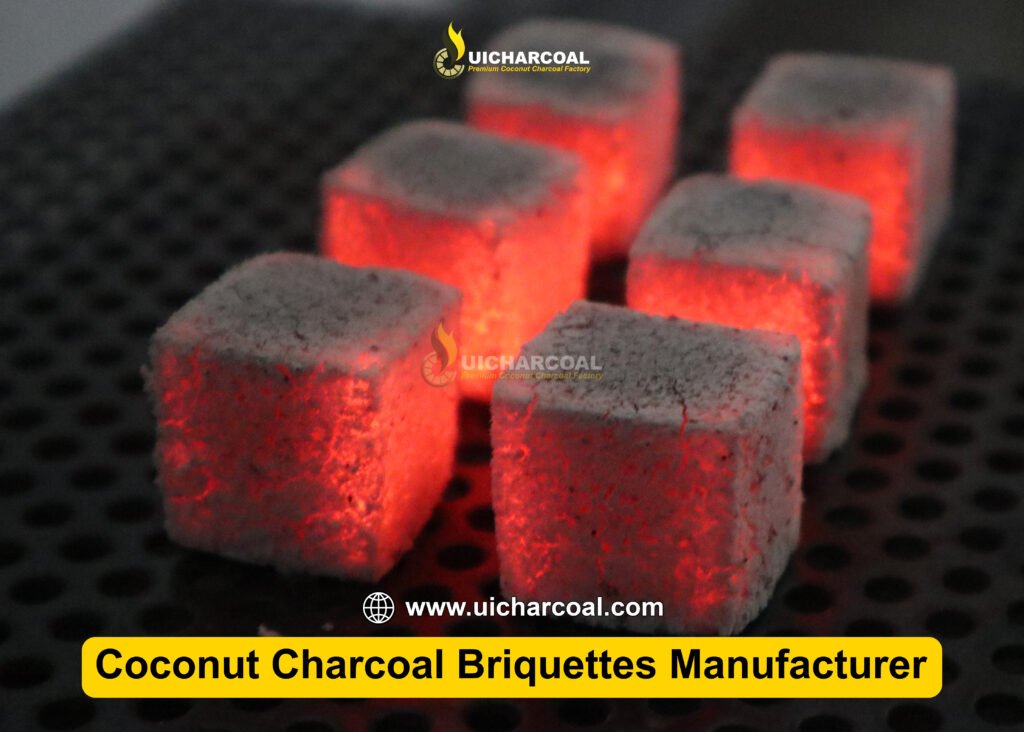
When it comes to quality, consistency, and performance in the charcoal world, not all briquettes are created equal. For discerning BBQ lovers, shisha brands, and international distributors, premium coconut charcoal stands above the rest — and understanding how it’s made can help buyers distinguish excellence from mediocrity.
At UICHARCOAL, we’ve spent years perfecting the process of turning discarded coconut shells into high-performance charcoal briquettes trusted by global brands. In this blog, we’re pulling back the curtain to show you the entire journey of premium coconut charcoal manufacturing, from raw material to final flame.
Step 1: Sourcing High-Quality Coconut Shells
Every great briquette starts with the right raw material. We use 100% natural coconut shells — not wood, sawdust, or mixed biomass — to ensure our charcoal is pure, dense, and clean-burning.
Why coconut shells?
- They are a renewable, eco-friendly waste product
- High in lignin, making them ideal for dense carbon content
- Free from resin and volatile chemicals that cause odor
We source our shells from trusted coconut-processing regions in Indonesia, ensuring consistency and traceability.
Step 2: Carbonization — Turning Shells Into Charcoal
The next step is carbonization, where we convert coconut shells into pure carbon by heating them in traditional dome-shaped kilns. This low-oxygen combustion process removes water and volatile gases, leaving behind solid black carbon — the base of our charcoal.
At UICHARCOAL, we use:
- Firewood-fueled dome kilns or modern retort systems
- Controlled burn cycles of 3–7 days
- Skilled local workers who monitor temperature and smoke output
This artisanal-meets-scientific approach ensures every batch is fully carbonized, eliminating odor-causing compounds and enhancing heat retention.
Step 3: Crushing and Screening
Once the shells are fully carbonized, they’re cooled and transported to our crushing facility. The charcoal is ground into a fine, uniform powder and then sieved to remove any dust, debris, or oversized chunks.
Consistent particle size matters because it affects:
- Compression strength of the final briquette
- Burn time and consistency
- Uniform ignition
Only the finest carbon powder proceeds to the next stage.
Step 4: Mixing With Natural Binders
The powdered charcoal is then blended with a food-grade binder — typically tapioca starch — which helps the briquettes maintain their shape without adding any chemicals or odor.
We never use synthetic binders or fillers.
This stage is critical because it:
- Enhances briquette durability
- Maintains an odor-free, flavor-neutral burn
- Ensures eco-friendliness
We carefully monitor moisture content and binder ratio to maintain consistent product quality.
Step 5: Molding into Briquettes
We offer a range of briquette shapes tailored to different markets:
- Cubes (22mm–26mm) for shisha
- Hexagonal sticks (e.g., 5 cm x 20 cm) for BBQ
- Custom shapes for OEM/private label brands
Our high-pressure hydraulic presses ensure:
- Dense briquettes with long burn times
- Minimal air pockets
- Even sizing for uniform combustion
At this point, the product begins to resemble what you receive in packaging — but it still needs drying.
Step 6: Drying and Curing
After molding, the briquettes contain residual moisture and must be dried to achieve <5% moisture content. We use two main methods:
🔥 Traditional Oven Drying
- Firewood-powered stoves heat drying chambers
- Low, slow heat preserves integrity
☀️ Natural Sun Drying
- Eco-friendly, low-cost
- Dependent on seasonal weather
Drying can take 5–10 days depending on weather and batch size. Fully dried briquettes are stronger, more stable, and easier to package.
Step 7: Quality Control & Lab Testing
Every batch is tested for critical metrics:
| Metric | Target Range |
|---|---|
| Ash Content | 1.9%–2.3% |
| Moisture | <5% |
| Density | High (1.0–1.2 g/cm³) |
| Spark Production | None |
| Odor | None |
We conduct burn tests, compression tests, and moisture analysis to ensure every briquette meets export-grade expectations.
Step 8: Packing and Labeling
We offer flexible packaging options for both retail and bulk customers:
- Printed cartons with private labels
- Kraft paper bags for eco-focused markets
- Bulk sacks for wholesale buyers
Our factory also supports:
- Multilingual labeling (Arabic, English, French, Turkish)
- Barcode and customs-compliant packaging
- Moisture-resistant materials to preserve shelf life
Step 9: Export Preparation and Delivery
With more than 10 countries in our export portfolio, we handle full international logistics:
- FOB or CIF terms
- SGS inspection and documentation
- Palletized or container loading
- Fast port access and customs clearance from Indonesia
Our factory, UICHARCOAL, is experienced in international trade and maintains a seamless export process to support distributors, shisha brands, and BBQ product importers.
Final Thoughts: More Than Just Charcoal
Premium coconut charcoal briquettes are more than just fuel — they’re a reflection of clean energy, sustainability, and craftsmanship. At UICHARCOAL, we take pride in offering a transparent, reliable manufacturing process from shell to flame.
Whether you’re sourcing for shisha, BBQ, retail, or private label use, our process ensures:
- High performance
- Low emissions
- Environmentally responsible production
- Competitive pricing and packaging flexibility
📩 Want to experience the full process in action? Contact UICHARCOAL for samples, factory tour bookings (virtual or in-person), or private label inquiries. Discover the difference of premium manufacturing — from the source.
